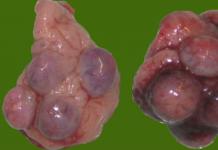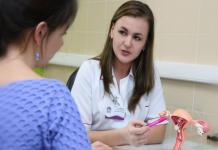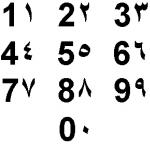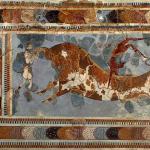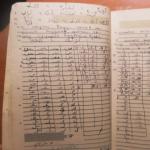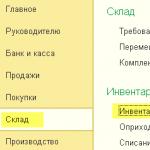Address: Estonia, Tallinn, Town Hall Square
Date of construction: 15th century
Coordinates: 59°26"15.9"N 24°44"45.6"E
Short description
Opposite the city hall, at Town Hall Square, building 11, there is one of the oldest pharmacies in Europe. For 600 years, the pharmacy operated in the same building.
View of the Town Hall Pharmacy from Town Hall Square
The first documentary mention of this medical institution is found in the register book of the Tallinn magistrate, where it is noted that in 1422, on the eve of Palm Sunday, the Town Hall pharmacy was leased to the pharmacist Nikolaus. Other chronicles indicate that a pharmacy existed in this premises before, and in 1422 it only became subordinate to the magistrate. The pharmaceutical establishment was run by 10 respectable citizens, most of whom were elders of the city council. Some researchers consider the founding date to be 1415, but in any case, medicines began to be produced in the town hall pharmacy earlier than Christopher Columbus discovered America (1492).
Town Hall Pharmacy - family business of pharmacists Burchardts
Already in the middle of the 15th century, the magistrate rented out the pharmacy for temporary use to businessmen-pharmacists and, in addition to the rent, demanded sweets, wine and paper. Due to financial difficulties, pharmacists had to work as doctors. Tenants changed one after another, until in 1583 the city council entered into another agreement with the Hungarian immigrant Johann Burchardt.

Entrance to the pharmacy
It was he who became the founder of the dynasty of pharmacists, who ran the pharmacy for 325 years. The first Burchardt began the family tradition of calling each subsequent pharmacist by the name Johann. During his time managing the pharmacy, Burchardt I experienced all the vicissitudes of fate - ingratitude, the possibility of bankruptcy and the threat of debtor's prison. And in 1602, when a plague epidemic broke out in Tallinn, the pharmacist had to be the only doctor. Other doctors either died or left the city to escape the Black Death. For Burchardt's followers, luck smiled more often.
In 1688, Johann IV bought the pharmacy from the magistrate as his personal property for 600 thalers, and all the descendants of the pharmacist were obliged to pay the city council an annual tax of 30 thalers. After receiving the money, a large sweet pretzel and a bottle of Spanish wine were sent from the town hall to the pharmacy as a return offering. This tradition continued until 1877. The last time the pharmacy received a symbolic pretzel from the town hall was in 1972 in honor of its 550th anniversary. The career of Johann Burchardt V began in 1710, when Tallinn was captured by the Russian army during the Northern War.

Museum in a pharmacy
The young pharmacist became the city's chief physician and supplier of medicines to the Russian navy. According to legend, Burchardt V treated Peter I, and in 1725 the Russian Tsar called the pharmacist to his deathbed. Unfortunately, Peter I passed on to the Lord before the Revel doctor had time to arrive in St. Petersburg. Perhaps one of the most outstanding representatives of the Burchardt dynasty was Johann VIII, who gained fame as a man who respected science and art. After studying medicine at the University of Jena, Johann VIII worked as a practicing physician in hospitals in St. Petersburg, after which he returned to Tallinn and ran the Town Hall Pharmacy until his death. The young doctor Burchardt, who had been interested in the East since his student years, collected ancient and outlandish things. In the attic of the Town Hall Pharmacy, Burchardt opened a cabinet of antiquities, calling it in French “Mon faible” (“My weakness”). Today, some exhibits from his collection can be seen in the Estonian History Museum, located in the Old Town of Tallinn on Pikk Street.

Assortment of goods from the Town Hall Pharmacy in the Middle Ages and today
In the Middle Ages, pharmacies sold medicinal drugs in the form of powders from rhinoceros horn and burnt hedgehogs, snake potion, and perfume. The pharmacists owned a plot of land behind the fortress wall, repurposed for growing medicinal herbs. The town hall pharmacy was more like a shop or a club where you could meet friends, immediately buy a quill pen and ink and write a letter. In addition to drugs, pharmacists sold paper, gunpowder, smoking pipes, tobacco, candles, paints and much more. Claret wine and marzipan were offered to clients as medicines. Claret, smelling of cloves and ginger, was served along with biscuits prepared in a pharmacy. Along with Germany and France, Estonia also claims to be the birthplace of marzipan. According to one legend, the recipe for marzipan was invented by an apprentice named Mart, who worked at the Town Hall Pharmacy. Marzipan, made from almond flour and powdered sugar, was sold as a cure for mental ailments - its use was believed to have a beneficial effect on the nervous system.
In the very center of old Tallinn, on Town Hall Square 11, there is one of the most interesting institutions in the city - the old Town Hall Pharmacy (Raeapteek).

The Town Hall Pharmacy is considered the oldest operating pharmacy in Europe and, moreover, has existed to this day in the same place. There is no information about the exact date of foundation of the pharmacy. The document where the Town Hall Pharmacy is first mentioned is the Town Hall Record Book. Where it was recorded that in 1422 the pharmacy was leased to the pharmacist - Nikolaus “In the year of the Lord 1422 AD, on the Monday before Palm Week...”. Subsequently, other records indicated that the pharmacy had operated even earlier. In any case, medicines began to be prepared in pharmacies even before Columbus discovered America!
Of course, in Europe there were pharmacies that opened earlier than the pharmacy on Town Hall Square in Tallinn, but they all closed sooner or later, and the Town Hall Pharmacy always worked... both during the war and the plague, in general, since 1422 it has never been closed!

The purpose of the pharmacy was not only to manufacture and sell medicines. Previously, the pharmacy was a place where townspeople liked to gather. Here, for example, merchants exchanged news, drank herbal teas, a wonderful and invigorating drink, claret (recipe: Rhine wine, sugar, cinnamon, ginger, cloves, saffron). In addition to medicines, you could buy gunpowder, salt, paper, ink, spices, and wax at the pharmacy.

In the old days, the pharmacist was one of the most erudite and respected people in the city. In one person there was a doctor, a pharmacist, a public figure, a scientist, a merchant and a politician.
In the old days, the apothecary obtained raw materials for making medicines using several possibilities. He bought raw materials from local merchants who brought them from overseas. He bought from villages, from people who collected medicinal herbs and berries, and also took raw materials from gardens owned by pharmacies.

Extracts, oils, tinctures were stored in ceramic containers. Dried plants in wooden chests. In the basement of the pharmacy, chest number 47 has been preserved; we can conclude that the pharmacist had such a number of chests where he could store raw materials for making medicines.

Initially, the pharmacy belonged to the magistrate, who rented it out to private individuals. In addition, the pharmacist had to send wine and sweets to the Lord Ratmans for the holiday.
In 1550, a certain pharmacist Holzwarth from Danzig became a paid pharmacist, paying 40 telers a year for the rent of the pharmacy.

For various reasons, pharmacists changed quite often before 1580. They rented a pharmacy from the magistrate or received salaries from him as employees. In 1580, the Hungarian Johann Burkhart Belavari de Sikava entered the Town Hall Pharmacy, he was the first in a long dynasty of pharmacists who ran the Town Hall Pharmacy. At first he worked as a clerk, then as a paid manager and soon as a tenant. For more than 300 years before the beginning of the 20th century, the name of the Burchards was associated with this pharmacy.
In 1689, the Burchards acquired ownership of the entire pharmacy building from the magistrate, which consisted of a retail space, a laboratory, a basement, and a house for an apprentice. The pharmacy was owned by the Burchards until 1911….

If we talk about medieval medicine, then as ingredients for medicines, the pharmacist used the following components: burnt bees, dried toads, stallion hooves, burnt hedgehogs, swallow nests, wolf guts, sun-dried dog feces, goat blood, hare hearts, earthworms in oil, skull salt, hands of a mummy of an overseas person, etc.

It’s no wonder that there were no long-livers in the Middle Ages.
Very often, when there were not enough material resources for treatment, they used prayer and a magical combination of words. For example: ROZAPILLA-ALLIPAZOR, magical phrases were written down on paper and swallowed. Salt spells, etc. were also popular.
The state system of pharmaceutical services was replaced by private ownership - and the pharmacy business faced many difficulties.
The main problems of the transition period were the lack of a legislative framework and an acute shortage of financial resources among pharmacy owners. Today, these problems have already been solved, but the pharmaceutical supply of the population still does not reach the average European level.
The oldest pharmacy in the Baltics
The first mentions in historical documents of pharmacy shops in Riga date back to 1291, but the exact location of these pharmacies is unknown. For this reason, the history of Latvian pharmaceuticals officially dates back to 1357, when the first Riga Town Hall Pharmacy, the building of which was adjacent to the old Town Hall building, was first mentioned in chronicles. This pharmacy establishment is officially considered the oldest pharmacy not only in Latvia, but throughout the Baltic states. The Town Hall (or Big) Pharmacy for a long time belonged to a famous dynasty of doctors and pharmacists Himseley - Martini- I even visited this family Peter the First. The Town Hall Pharmacy existed until 1758, and currently its building has not survived. But in the long history of Latvian pharmaceuticals, there were other famous pharmacies that provided the population with medicines and healing potions for several centuries. The most famous of them are the Elephant Pharmacy (it operated in Riga from 1570 to 1939), the Pharmacy on Izvestkovaya Street (it operated from 1655 until the beginning of the twentieth century), the Pharmacy under Olenem (1628-1941) and the Lion Pharmacy (1691-1941). 1941). Some old Riga pharmacies still operate today.
The first pharmaceutical regulations were adopted in Riga in 1636. In the Middle Ages, pharmacies were privately owned, but their activities were controlled by city authorities: they set prices for medicines and checked the professional level of pharmacists. The most famous medicine of that time is the famous “Riga Black Balsam” - the first mention of it dates back to 1752. The balm contains 24 ingredients, and it is still produced in Riga.
Photo: Flickr.com/DubeFranz
In 1919, 5 pharmacies of working people were opened in the Latvian SSR, which provided free medicines to the poor and least protected segments of the population. The new history of Latvian pharmacy began in 1940, when all pharmacies were nationalized.
According to the law…
After Latvia left the USSR in 1991, the first private pharmacies appeared in the country again, and a little later - pharmacy chains. In 1997, the Law on Pharmaceuticals was adopted, to which numerous amendments and additions were later made. Currently, this law regulates the activities of the entire pharmaceutical business in the country.
A pharmacy in Latvia can be owned by a certified pharmacist (as a private practice), local authorities or registered as a joint stock company. If the pharmacy is not privately owned, it must be managed by a certified pharmacist. A pharmacy can be registered as a joint-stock company only if at least 50% of the shares are owned by a pharmacist or if at least half of the board members of the joint-stock company are certified pharmacists.

Opening a new pharmacy is not easy
There are restrictions on opening a pharmacy: if 4,000 people or fewer live in a locality, it is allowed to open two pharmacies; if there are from 4,001 to 7,000 residents, then there must be 2,500 people per pharmacy. In a city with a population of more than 100 thousand inhabitants, there should already be 5,500 people per pharmacy. If a pharmacy manufactures medicines or operates around the clock, then another pharmacy cannot be opened within a radius of 500 m. And in rural areas, one pharmacy should serve an area with a radius of 5 km.
In rural areas, even a pharmacist’s assistant can open a pharmacy, but provided that no more than 4,000 residents live in this locality, and there is no other pharmacy within a radius of 5 km. Under the same conditions, a branch pharmacy can be opened in rural areas, but in this case the branch must have the same name as the main pharmacy. Pharmacy chains are allowed in Latvia - the largest of them are Meness aptieka (JSC Sentor Farm aptiekas), which includes 240 pharmacies, Apotheka (90 pharmacies), Latvijas aptieka (65 pharmacies) and Benu (68 pharmacies).
The activities of all pharmacies in Latvia are controlled by a special Latvian Health Control Service.
All pharmacies are divided into general pharmacies, closed pharmacies, which are located in inpatient medical institutions and provide medicines only to these medical institutions, and veterinary pharmacies. Today there are 784 pharmacies operating in the country. The average profitability of retail pharmacies is less than 3% of turnover.
According to the law, open pharmacies have the right to package medicines in accordance with technical standards, manufacture medicines according to a doctor’s prescription, dispense medicines to medical institutions and social welfare institutions, and carry out retail sales of medicines to the public. Open pharmacies can also sell veterinary drugs, but this requires obtaining a special license for the sale of veterinary drugs. Private pharmacies can package and prepare medicines, but they have the right to supply medicines only to medical institutions and cannot sell them to the public at retail. Hospitals purchase medications both from wholesale pharmaceutical companies and directly from pharmacies, but most often through tenders.
Requirements for pharmacists
To work in a pharmacy, a pharmacist or pharmacist assistant must be registered with the Latvian Pharmaceutical Society, meet certain requirements, comply with the code of professional ethics and regularly improve their qualifications. If a pharmaceutical specialist was educated not in Latvia or in EU member countries, but according to international law his diploma is recognized as valid, then in order to obtain a license for independent practice in Latvia he must work for at least one year in a Latvian pharmacy under the supervision of a local pharmacist.
Only a pharmacist or a pharmacist's assistant (in rural areas) has the right to manage a pharmacy, but to do this you need to obtain a license - it is issued for 5 years, after which it must be renewed. To obtain a pharmacy management license, a pharmacist assistant must have at least 5 years of professional experience, but such experience is not required for a certified pharmacist.
Most medicines are imported
Most medicines on the Latvian pharmaceutical market are imported. Locally produced drugs account for only 5%, while some Latvian-produced pharmaceutical products are exported.
According to statistics, in an average Latvian pharmacy, from 70 to 80% of pharmacy sales are prescription drugs, and the remaining 20% are OTC drugs, vitamins, nutritional supplements, dietary supplements and cosmetics.
VAT on medicines is 12% (with a general VAT rate of 21%) and is the highest in the Baltic countries (in Estonia, VAT on medicines is 9%, in Lithuania - 5%). In general, medicines are more expensive in Latvia than in Estonia and Lithuania.
For some categories of patients, part of the cost of medicines is reimbursed by the National Health Service. Depending on the disease, all drugs from the positive list (the cost of which is reimbursed) are divided into three categories: 100, 75 and 50% price reimbursement. For example, drugs for the treatment of schizophrenia and hepatitis C are reimbursed 100%, drugs for hypertension - 75%, antidepressants - 50%. Most of the drugs on the positive list are generics. The list of reimbursed medicines does not include Russian or Belarusian drugs. But the financial resources allocated for compensation are not enough for everyone, so many patients in preferential categories are forced to pay for the medications they need in full. Experts believe that this situation will continue in the coming years.
Surprisingly, the old pharmacy of Tallinn, located on Town Hall Square, is also the oldest operating pharmacy in Europe. This is the only free museum of Old Tallinn, one of the main attractions of the city and an absolute must see. This tourist attraction is still free, because there is still a pharmacy there and it sells quite modern medicines, but most visitors, of course, do not go inside to buy cough medicine.
The Town Hall Pharmacy is truly unique, just think, the first mention of it dates back to 1422, in that year the pharmacy was leased to a certain Nikolaus. This event is noted in the Town Hall record book. The pharmacy existed in this very place for about 593 years, this is only according to officially confirmed history; most likely, the pharmacy existed even before the mentioned Nikolaus, since the document talks about renting, and not about construction and opening.
Tallinn Town Hall Pharmacy
The pharmacy not only produced and sold medicinal drugs. It was a place where life and death, happiness and misfortune, came into conflict. The pharmacist was a great magician who managed to revive a person’s faith in his healing, as well as produce the necessary medicine. The power of placebo has been confirmed by scientific research in our time, and in the Middle Ages this power was of primary importance for the patient’s recovery. Belief in a magic medicine strengthens the patient’s strength and desire for life, regardless of the historical period.

 The intricate door of the Town Hall Pharmacy
The intricate door of the Town Hall Pharmacy Nowadays, this is a pharmacy, first of all, a specialized retail outlet, but before it was a meeting place for townspeople, something like the current cafe. Here you could drink herbal tea, the wonderful drink claret, and at the same time talk about life, love, politics and entrepreneurship. Here, in addition to medicines, one could also buy salt, gunpowder, ink, paper, spices and other overseas curiosities.

 Interior of the Town Hall Pharmacy
Interior of the Town Hall Pharmacy In the old days, a pharmacist made medicines from improvised materials. It was easiest to buy medicinal herbs from villagers, but the most valuable medicines were made from substances purchased from overseas merchants. The rarer and more difficult to obtain the ingredient used in the production of the medicine, the more magical its effects were considered. Now society adheres to almost medieval views, for example, the vast majority of the population believes that foreign-made imported drugs are many times more effective than domestic ones, even if the dosage and active substance are the same.
Every self-respecting medieval pharmacy had its own garden for growing herbs. The first mention of a pharmacy garden in the city of Tallinn dates back to March 23, 1452. It belonged to the pharmacist Klaus Schultel and was located near the Barbara Chapel (on the corner of Roosikrantsi Street and Kaarli Avenue).
Unfortunately, no information has been preserved about what was grown in the garden of the Rae pharmacy, but there is such information for 1677 about the garden of the Narva pharmacy. There, under rather harsh conditions, the following plants and trees were grown: marshmallow, snapdragon, celery, mint, quinoa, evergreen boxwood, thistle, lupina, chamomile, yellow sweet clover, watercress, black cumin, tobacco, poppy, butterbur, pyrethrum, peonies, rosemary, sage, valerian, thyme (thyme), common nettle, calendula, chicory, honeysuckle, liverwort, dill, beans, lavender, lemon balm, elderberry, asparagus officinalis, cyclamen, yellow iris, roses. The list included 95 herbs, 33 colors and 24 roots.

 Discipline devices
Discipline devices How were medicinal components stored?
Extracts, oils, tinctures, etc. were stored in ceramic or glass containers. Dried medicinal plants were stored in well-ventilated attics in wooden boxes. In the Rae pharmacy, wooden chests were used for this. In the basement you can still see such a chest with the inscription on top in black Viola tricolor “HB: VIOL: TRICOLOR: No. 47”. Thanks to this inscription, we can conclude that herbs were stored in the pharmacy. This all gives us an idea of what a large amount of raw materials a pharmacist must have to prepare his medicines.
List of prices for pharmaceutical products
In 1695, a CODE OF PHARMACY RULES was published, in which the second part contained a list of prices for pharmaceutical products called “DAX”. This list gives an idea of the range of medicines of that time. Some remedies will seem completely wild and even sinister to you. A small fraction of these products are still on display in pharmacies.

 In one of the jars there is a burnt hedgehog
In one of the jars there is a burnt hedgehog List of components of medicinal products:
Dissected parts of insects and vertebrates:
Preparations prepared from human body parts and organs:
skull salt
human fat
alcohol from urine
mummy of an overseas man
human leather belt
Medicines of the Middle Ages
The list contained famous healing miracle drugs
Mandrake:
This root was used in the treatment of any diseases, as well as for problems with such subtle human feelings as love. The similarity of the root in shape to the human body explained its use in the form of magical healing rituals. According to legend, this root grew in the place where the sperm of a hanged man fell. pulling out a mandrake yourself was tantamount to death, so honor was given to the dog.
Mithridates:
The recipe for mithridates was developed by the Pentic king Mithridates VI, who was very afraid that he might be poisoned. This drug is a very complex medicine, but it has been in great demand for many centuries. It is known that it contains 54 components. Nowadays, the word mithridate is used to mean antidote.
Teriaka:
Theriaca was a recipe from the physician Andromache, who served under Emperor Nero. His prescription was based on the drug mithridate. He added new components there, such as viper meat. In the Middle Ages, about 130 new components were added to the medicine, making it one of the most expensive medicines. It is known that counterfeit medicines were also produced under the name of theriac, to which not viper meat was added, but veal meat.
Bezoar
Bezoar was also considered a universal remedy and an antidote. It was believed that gazelles lived far in the east, feeding on poisonous snakes and then leaving to cry in the cold springs. Their frozen tears turned into pieces of bezoar. Today, it is believed that bezoars are hard formations (bezoar stones) formed in the digestive system of animals.
Clarett
The Rae pharmacy was not only a place where medicines were sold. Respected gentlemen of the town hall, merchants and other noble townspeople came here to sip the wonderful drink claret while discussing their plans with the guests. In addition to the usual duties of selling in a pharmacy, the pharmacist had to send this drink to the gentlemen managers of the town hall and this offering was free of charge, for testing and just like that as a sign of friendly good relations.
Apparently this offering was not enough for the town hall. And we find in the learned book of the magistrate for 1467 a note where it is reported that in the Rae pharmacy the town hall bought 36 damasks of claret and paid 15 marks. This is considered the oldest document that records the purchase of claret from the Rae pharmacy.
Ancient recipe for making claret
Recipe dated 16th century
32 glasses of Rhine wine
2 pounds sugar
1 pound cinnamon
1 pound ginger
4 lots of cloves
4 lots nutmeg color
2 lots of saffron
Now you can also buy a bottle of claret at the town hall pharmacy, only 15 €.
Treatment with the magic of words in medieval Tallinn
Very often, when there were not enough material resources for treatment, they used prayer or a magical combination of words. In the Tallinn city archive there is a piece of paper dating from the 15th century with the text of a healing prayer. This was very typical and common for that time.
Elias and Enoch - both prophets are still alive. They are not in custody or shackled. Therefore, let the burn on the body be healed immediately and forever. May God and his five blood-soaked wounds help me with this. Read the Lord's Prayer five times and Ave Maria five times.
Monastery medicine often used magic and superstition in treatment, and this left its mark on folk medicine. Thus, the famous researcher of Finno-Ugric languages and folklore F. Weidmann discovered several magical phrases. The most interesting of which is the magic square.

 Magic square
Magic square Reading these words from top to bottom or bottom to top, from left to right and vice versa, we get the same series of words, but the meaning of these words is unknown. Such a magical healing phrase was written down on paper and swallowed.
When treating erysipelas, they did this: the sore spot was circled with a pencil, and the words ROZAPILLA - ALLIPAZOR or SINT SI SITST were written in the middle.
The first pair of words is a magic phrase; reading it from left to right and vice versa, the same words are obtained, but the meaning of these words is again not known. The second combination of words is apparently an excerpt from a prayer in Latin, as evidenced by the possibility of translation “Let there be...!”
Charming with salt is a ritual that came from outside. It has long been known that salt is a substance that preserves and protects life, and since ancient times this property has been known and widely used. Thus, Catholic monks in the Middle Ages treated not only with holy water, but also used consecrated salt for this purpose. Nowadays, sorcerers and healers, whispering magic words over salt, actually use the treatment methods of the priest-healers of the Middle Ages.
Jars with mysterious symbols
Pharmacy was full of mysteries and mystery. This impression was reinforced by the vessels standing on the shelves, because each was signed in an unusual manner and marked with a mysterious sign. These signs were instead of names and came from alchemists.

 Vessels with medicinal liquids still stand on the window
Vessels with medicinal liquids still stand on the window The most famous are the following notations:
LLC - arsenic
N - lead
63 - cream of tartar
The use of symbolism in the recipe helped keep everything secret from people uninitiated in this matter, and also aroused greater reverence for the doctor and pharmacist. The magical forms and the mystery of the symbols seemed super smart and worthy of worship to the people involved in this business.
Some designations from that time are still used today. For example, the following abbreviations:
Rp— lat. "recipie" - reception
# —
denoted in the Middle Ages the beginning of the recipe “cum deo” - with God’s help
The Burchardt family played a major role in the life of the pharmacy. As many as 10 generations of one family ran the pharmacy from 1617 to 1911; probably nowhere else in the world can such a pharmacy dynasty be found.

 Burchardt family coat of arms
Burchardt family coat of arms 
 Bas-relief in a pharmacy
Bas-relief in a pharmacy I hope I have convinced you of the exceptional advantages of the Town Hall Pharmacy. The only surprise is that the Town Hall archives are so well preserved. And all dates in the history of the pharmacy are documented. And medieval methods of treatment, for example, are also used by modern magicians, and there are even patients who want to give themselves into the hands of sorcerers, so we are not so far removed from the Middle Ages. The only good news is that now powder from overseas mummy is no longer in use.
The Town Hall Pharmacy, located in one of the buildings on the Town Hall Square, is the oldest operating pharmacy in the world. The first mention of this establishment dates back to 1422. According to these documents, the first pharmacist was Johann Molner. However, it is possible that the pharmacy began operating even earlier. This pharmacy operates for its intended purpose to this day.
Today, the pharmacy sells modern medicines and drugs. In addition, in the second hall of the pharmacy there is a museum hall, which displays drugs used in treatment in the Middle Ages. In the Middle Ages, pharmacy customers could purchase treatments such as mummy juice, which was mummy powder mixed with liquid; powder from burnt hedgehogs or bees; bat powder and unicorn horn, as well as snake potion. In addition, one could purchase earthworms, swallow's nests, or even herbs or perfumes.
In addition to medicines, food products were also available: cookies, sweets and marzipan. According to legend, the marzipan recipe was invented by local pharmacists. They experimented with mixing various medicines, and as a result, one day they got marzipan. This delicacy is the hallmark of Tallinn, which you can buy for yourself or take to friends as a souvenir.
You could also buy household goods at the pharmacy. This establishment sold paper, candles, ink, gunpowder, paints, and spices. And when tobacco was brought to Estonia, the first place where it was sold was the town hall pharmacy.
Entrance to the pharmacy and museum hall is free, and you can even help yourself to marzipan at the cash register. The establishment is open from 9 to 19 on weekdays, and from 9 to 17 on Saturday.

